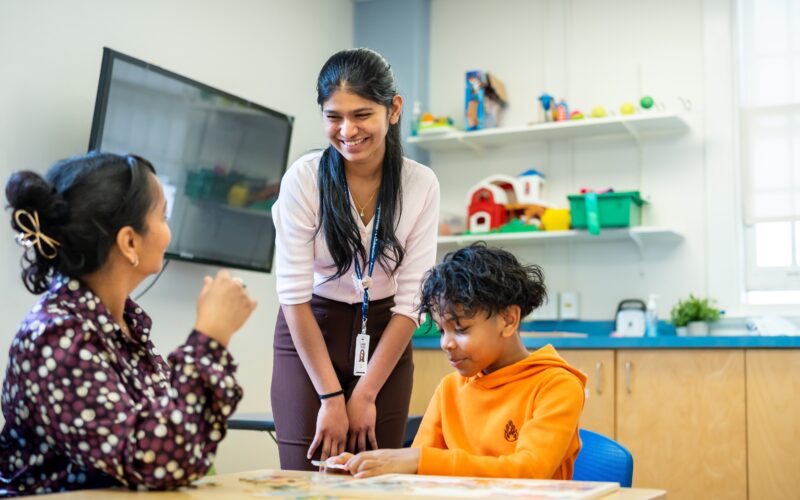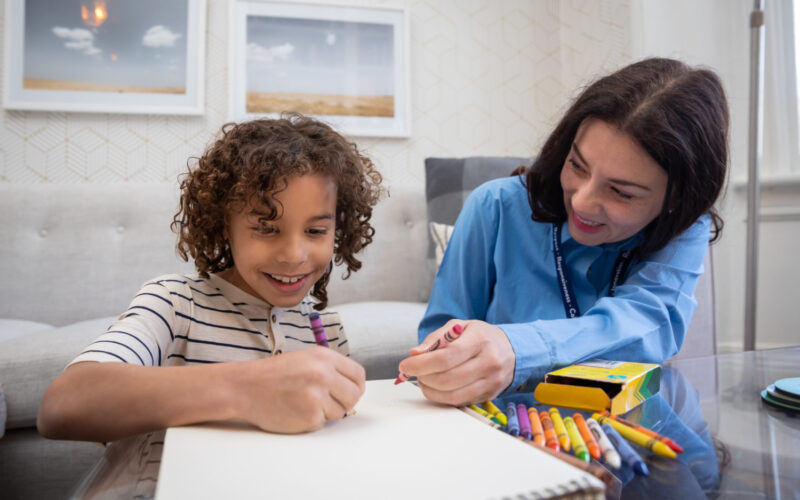Tips for Promoting Play Skills
OCTOBER 13, 2020
Play is the way a child learns to make sense of their world. Sharing enjoyment in play develops connectedness with others, promotes engagement and social inclusion.
Developmental Play Milestones include:
- Solitary play: independent use of toys
- Parallel play: engaging with materials alongside another peer, sibling or caregiver
- Associative play: giving, taking and sharing play materials
- Cooperative play: exchanging ideas about a game or toy, working together towards a common goal, learning to respect other’s property
These developmental play milestones often build upon each other, however; a child may show different skills in different scenarios, such as at home or school, or with different items.
WHY IS PLAY IMPORTANT?
Play skills support children in the development of fine and gross motor skills, language and communication, problem solving and social skills. Learning how to play is key to successfully navigate and engage in the classroom and community settings and for interacting with others.
- Choose a play space
- Select a clear area for your play, such as a playmat or bedroom
- Choose a time or daily routine to practice in, such as bath time
- Set up the environment
- Remove distractions – turn off or remove electronics and distracting items
- Select 3-4 toys and place them in the play area
- Tip: Items with multiple pieces or sets work best (e.g., blocks, pretend food)
- Let your child lead
- Watch to see what they choose to play with and how they use that item
- Copy their actions, words, or movements
- Tip: Avoid telling your child what to do or directing the play
- Model language and play
- Make comments about your child’s play (e.g., “car goes up”, “feed baby”)
- Show your child other actions they can do with the toy (e.g., wash car, put baby to sleep)
- Tip: Aim to model language and actions at your child’s developmental level or slightly higher
- Praise your child
- Praise your child’s attempts to copy your words and actions, or interact with you
- Use verbal praise (e.g., “Good job stacking”) or physical touch (e.g., tickles)
- End on a positive note
- Aim to end the play session before your child’s interest completely fades
- My child is not using the toys functionally
- Model more appropriate actions or incorporate other toys into the play session
- For instance, if your child enjoys watching the wheels of a car spin, you can model how to roll the car on the track or incorporate spinning tops into the play
- My child tries to leave the play sessions
- Consider making your play sessions shorter in length (e.g., 5 mins) and increase over time
- Try to avoid giving your child too many instructions or rules
- My child only wants the iPad
- Gradually expose your child to other items, activities or experiences in a fun way to increase their play repertoire (e.g., bubbles, waterplay, tickles, trampoline)
- Attempt to join in with the iPad by singing along or taking turns with games


